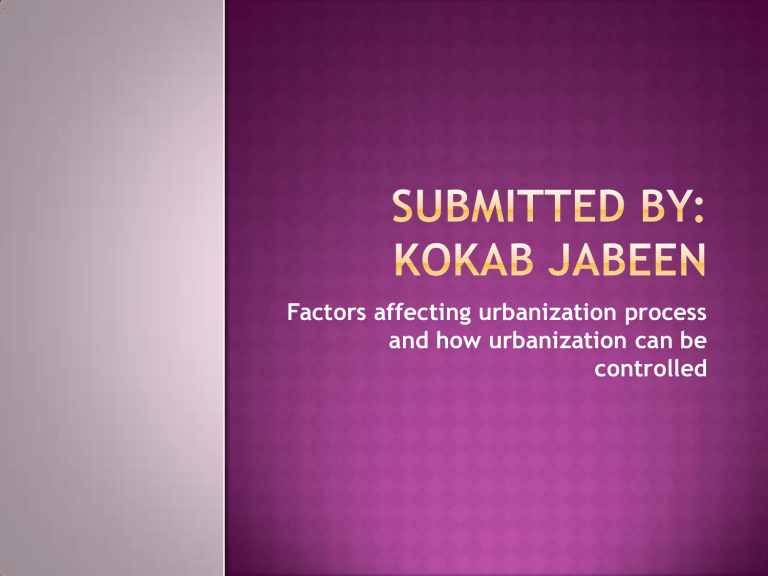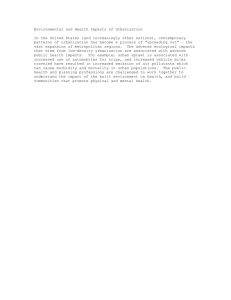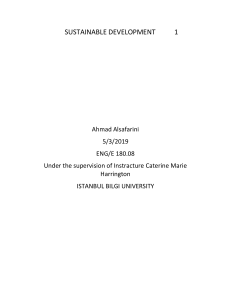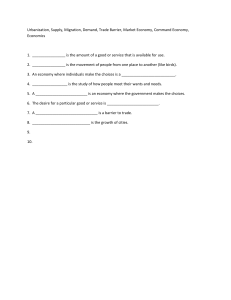
Factors affecting urbanization process and how urbanization can be controlled Urbanization, the process by which large numbers of people become permanently concentrated in relatively small areas, forming cities. Natural increase of urbanization can occur if the natural population growth in the cities is higher than in the rural areas. Industrial revolution Workers moved commercial hubs Agricultural jobs less A country is considered to urbanize when over 50 per cent of its population live in the urban areas (Long 1998). An urban area is spatial concentration of people who are working in non-agricultural activities. Growing center for modern production and industry Internal commerce and foreign trade Financial services Education and govt. Rural area Education Health Safe drinking water Electricity Fresh Food Entertainment Jobs Low income people. Urban area High level of education Better facilities of health Drinking water Electricity Food Entertainment Jobs opportunity High level of income (HABITAT 1996, Bilsborrow 1998). Rural urban migration Population growth Natural growth of urban pop reclassification Water Air pollution noise Environmental pollution food traffic Solid waste health Housing and homelessness unempoyment poverty crime unemployment political attention. One problem is to integrate land- and water use planning to provide food and water security (UNEP 1999). 90 million babies are born each year At this rate, by the year 2050, global population will reach 10 billion. Growing demand for food and facilities Problem to food production • Rapid population growth not only lessens available calorie supply from food per person but also risks the present food production with pollution. • Agricultural food • Industrial food co acid precipitation acidity of waters Lead photochemical pollutants Pollution due to burning of fuel Traffic Traffic jam Respiratory diseases lack of sanitation and sewage treatment Local water bodies are used as a dumping ground for untreated water from urban areas. Solid waste management means proper collection, transfer, recycling and disposal of solid wastes. The people end up to the illegal dump on streets, open spaces, wastelands, drains or rivers. Sometimes they are collected to the land sites but the protection of water bodies and groundwater is not active (HABITAT 1996, Ogu 2000). . Industrial operation Highway traffic Sources of noise Construction activities Air crafts water is not geographically equally divided and seasonal changes are extensive. In Africa, 14 countries already experience water stress or water shortage. Another 11 countries will join that list in the next 25 years (Somlyódy et al. 2001, Postel 1992). 20% of the world’s pop fall short to safe water Environmental problems link between environment and health is evident. • Environment-related diseases or accidents remain among the major causes of illness, injury, and premature death. • Poor environment, housing and living conditions are the main reasons to the diseases and poor health At least once every five years, more than a half of the world’s population living in the cities with 100,000 or more inhabitants are victims of a crime of some kind. Only in Asia this proportion is under 50 percent. urban violence is estimated to grow 3 to 5 percent every year . The houses are often small and overcrowded and also lack facilities like; piped water supplies, the removal of excreta and solid wastes, drainage and roads. 33 to 67 per cent of the population lives in housing units that are in poor condition. Informal sector driving motorbike taxis, selling low-cost meals, driving tuc-tucs (open taxis) or collecting garbage. misemployment It means that a person might be full-time employed, but the task performed promotes little to social welfare. Lack of jobs Inflation Unskilled population Over population unemployme nt Environmental Implication Waste Recycling New Challenges of Sustainability Policy Responses and Tools to manage Urbanization Poverty National planning to control urbanization to manageable levels Regional / Urban planning to guide urbanization to manageable situation Tool to manage Intra-urban management to cope with urbanization problems Participation, Partnership and Governance Socialist model South African model •Socialism •People were not allowed to permanently move from the place of birth to urban area. •This method was not to control the migration of single people but decrease migration with families



